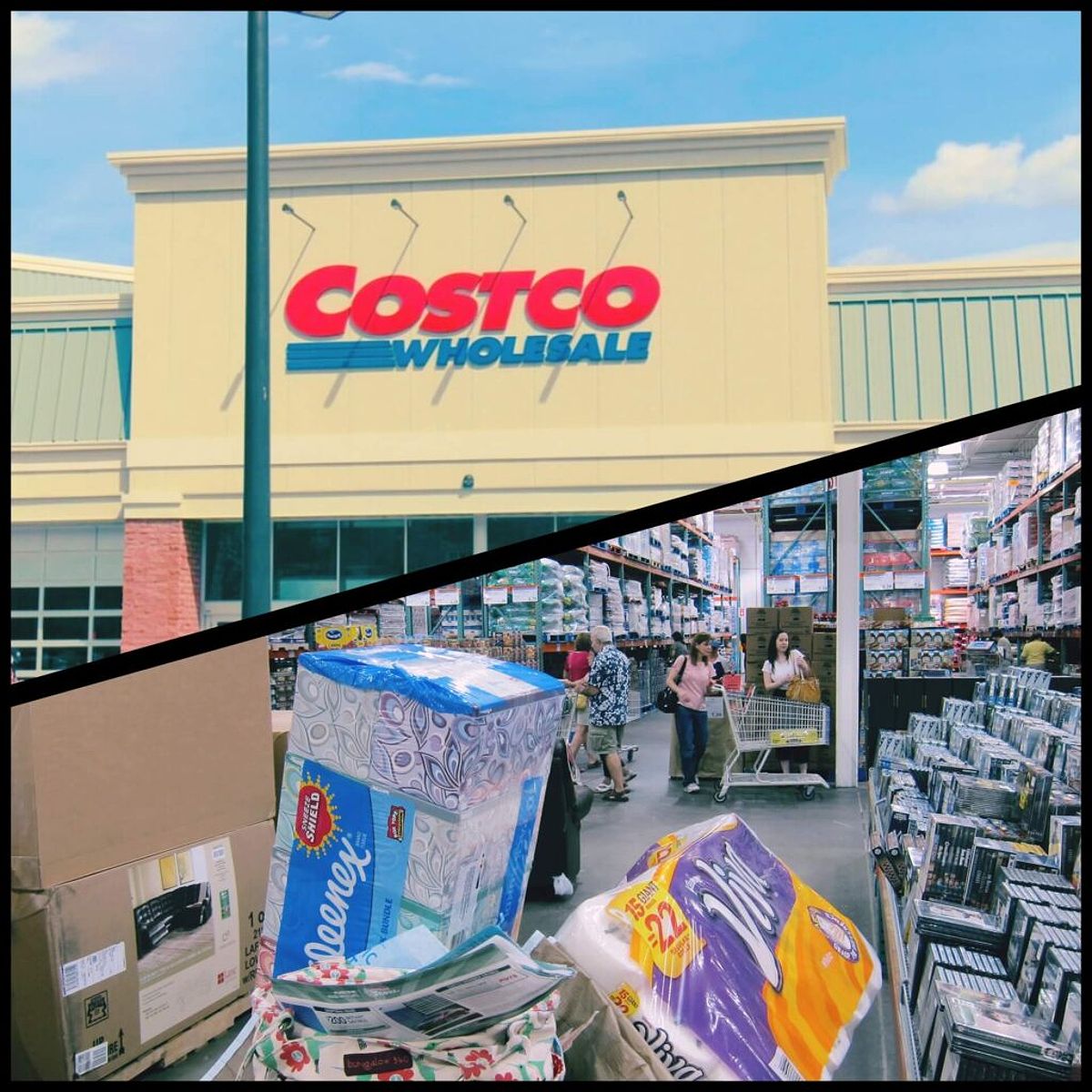The Ultimate Guide To Choosing The Best Virtual Terminal Credit Card Processing For Your E-commerce Business
As an e-commerce entrepreneur, I understand the importance of seamlessly accepting online payments from customers worldwide. Virtual terminal credit card processing has become a game-changer, offering the flexibility and convenience my business needs to streamline payment operations and elevate the customer experience. With the right virtual terminal solution, I can simplify transactions, reduce costs, and safeguard sensitive customer data -- all critical factors for driving the growth of my e-commerce venture. In my quest to find the perfect virtual terminal provider, I've immersed myself in the intricacies of the payment processing landscape. This comprehensive guide distills my learnings, equipping you with the knowledge to navigate the options, understand the key features to consider, compare pricing models, and ultimately select the best virtual terminal credit card processing solution to propel your e-commerce business forward.
Unlocking the Power of Virtual Terminal Credit Card Processing
Virtual terminal credit card processing is an online payment gateway that allows you to securely accept credit card transactions without the need for a physical card reader. Unlike traditional point-of-sale (POS) systems, virtual terminals empower e-commerce businesses like mine to process payments over the phone, through our website, or any internet-connected device.
The benefits of virtual terminal credit card processing are numerous. It provides the flexibility to accept payments from anywhere, which is particularly valuable for businesses with remote or hybrid work environments. Equally important, virtual terminals offer enhanced security through advanced encryption and fraud prevention measures, ensuring the protection of sensitive customer data.
Additionally, virtual terminals are generally more cost-effective than traditional POS systems, making them an attractive option for businesses of all sizes. By streamlining payment processing, virtual terminals can also help reduce overhead costs and simplify our workflow, allowing us to focus on what truly matters -- growing our e-commerce operations.
Navigating the Essential Features of Virtual Terminal Providers
When selecting a virtual terminal provider for my e-commerce business, I've identified several critical features that have become the cornerstone of my decision-making process.
Safeguarding Security and Compliance
The security of my customers' sensitive information is of utmost priority. I've learned to look for virtual terminal providers that are PCI-DSS compliant, ensuring they adhere to the highest industry standards for data protection. Equally important, I ensure the provider utilizes end-to-end encryption and robust fraud detection tools to mitigate the risk of unauthorized access or breaches.
Tokenization is another feature that has caught my attention. By replacing sensitive data with unique identifiers, tokenization adds an extra layer of security, making it exceedingly difficult for hackers to access customer information, even if they were to gain access to my systems.
Offering Diverse Payment Methods
My e-commerce customers come from diverse backgrounds and have varying preferences when it comes to payment methods. Therefore, I've prioritized virtual terminal providers that offer a wide range of options, including all major credit cards (Visa, Mastercard, American Express, Discover) and debit cards. I've also found great value in providers that support alternative payment methods, such as PayPal, Apple Pay, and Google Pay, as this caters to the diverse needs of my customer base.
By offering multiple payment options, I've witnessed a significant enhancement in the customer experience, leading to higher conversion rates and reduced cart abandonment -- a critical factor in driving revenue growth.
Seamless Integration
Seamless integration between my virtual terminal and e-commerce platform is essential for a smooth and efficient payment process. I've meticulously evaluated providers that offer easy-to-use APIs, plugins, and integrations with popular platforms like Shopify, WooCommerce, and Magento. This ensures a seamless transaction flow and data synchronization between my online store and the payment processing system.
Moreover, I've also considered the provider's ability to integrate with other business tools I use, such as accounting software, inventory management systems, and customer relationship management (CRM) platforms. This level of integration has helped me streamline my operations and improve overall efficiency.
Transparent Fees and Pricing
Understanding the various fees associated with virtual terminal credit card processing has been a crucial part of my evaluation process. I've closely examined transaction fees, monthly/annual fees, and any additional charges for features like fraud protection or customer support. By comparing pricing models across different providers, I've been able to find the most cost-effective solution for my e-commerce business.
Many virtual terminal providers use a tiered pricing model, where fees vary based on transaction volume and the type of card used. I've carefully assessed whether the pricing structure aligns with my business model and can accommodate growth as my transaction volume increases.
Reliable Customer Support
Responsive and reliable customer support has been a deal-breaker for me when selecting a virtual terminal provider. I've prioritized providers that offer 24/7 assistance through multiple channels, such as phone, email, and live chat. This ensures that any issues or inquiries can be quickly resolved, allowing me to maintain a high level of service for my customers.
Additionally, I've thoroughly researched the provider's reputation for customer support by reading reviews and testimonials from other users. A provider with a strong track record of customer service can significantly impact my overall experience and satisfaction.
Exploring the Best Virtual Terminal Credit Card Processing Providers
With a deep understanding of the essential features, I've explored some of the leading virtual terminal credit card processing providers for e-commerce businesses like mine:
Shopify Payments
As an integrated solution for Shopify users, Shopify Payments has caught my attention with its seamless virtual terminal experience. The key advantages include lower transaction fees for Shopify merchants, simplified account management, and a user-friendly interface. However, the main limitation is that it is only available to Shopify users, and it lacks some advanced features like recurring billing or comprehensive chargeback management tools.
One feature I've found particularly valuable is Shopify Payments' built-in fraud analysis tools, which have helped me identify and mitigate potential fraudulent transactions before they occur. This is especially beneficial for e-commerce businesses like mine, which may be more vulnerable to online fraud.
Stripe
Stripe has emerged as a popular choice for e-commerce businesses due to its developer-friendly API, support for a wide range of payment methods, and global reach. With Stripe, I've been able to easily customize my virtual terminal to fit my business needs. While Stripe offers powerful features, the setup may be more complex for non-technical users, and the transaction fees can be slightly higher than some competitors.
In addition to its robust payment processing capabilities, Stripe also offers advanced features such as subscription billing, invoicing, and support for multiple currencies, making it an excellent choice for businesses looking to expand their reach internationally.
PayPal
PayPal is a well-recognized and trusted payment processor, making it a convenient option for my e-commerce business. The virtual terminal solution allows me to accept payments from customers with existing PayPal accounts, and it offers buyer protection features. However, PayPal's transaction fees are generally higher compared to some other providers, and the customization options may be limited.
One of the key advantages of using PayPal is its extensive user base, which has helped increase customer trust and encourage more sales. Many of my customers prefer to use PayPal due to its familiarity and the additional security it provides.
Authorize-net
Authorize.net is known for its robust security features and integration capabilities with various e-commerce platforms. The virtual terminal solution offers advanced tools like recurring billing and fraud prevention, making it a suitable choice for e-commerce businesses like mine. The main drawbacks are the higher transaction fees and limited customer support options compared to some competitors.
Authorize.net also provides a suite of reporting tools that have helped me analyze transaction data, identify trends, and make informed decisions to improve my business operations.
Square
Square's virtual terminal solution stands out for its user-friendly interface and mobile-friendly design, making it easy for me to accept payments on-the-go. The platform integrates with a range of e-commerce platforms, though the integration options may be more limited than some other providers. Square's transaction fees are also generally higher than some competitors.
One of the key advantages of Square is the additional features it offers, such as inventory management, employee management, and sales analytics, providing a comprehensive solution for small to medium-sized businesses like mine looking to streamline their operations.
Optimizing Your Virtual Terminal Credit Card Processing
To ensure I get the most out of my virtual terminal credit card processing solution, I've implemented the following optimization strategies:
- Negotiate Lower Transaction Fees: Based on my transaction volume and business needs, I've successfully negotiated lower transaction fees with my virtual terminal provider. Many providers are willing to offer more competitive rates for high-volume merchants like myself.
- Implement Fraud Prevention Measures: I've taken full advantage of the fraud detection and prevention tools offered by my virtual terminal provider to minimize chargebacks and protect my business from fraudulent activities. I regularly review and update my security measures to stay ahead of potential threats.
- Utilize Recurring Billing Features: As my e-commerce business offers subscription-based products or services, I've leveraged the recurring billing features provided by my virtual terminal provider to streamline the payment process and improve customer retention. This has helped create a predictable revenue stream for my business.
- Track and Analyze My Transaction Data: I consistently review the transaction data and reporting provided by my virtual terminal provider to identify areas for cost optimization and process improvements. Understanding my payment trends has allowed me to make informed decisions and refine my business strategy.
- Stay Informed About Industry Trends: I make it a priority to stay up-to-date on the latest payment processing industry trends and updates, ensuring my business remains competitive and compliant. This proactive approach has helped me anticipate and adapt to the evolving e-commerce landscape.
FAQ
Q: What are the benefits of using a virtual terminal for my e-commerce business?
A: Virtual terminals offer numerous benefits for e-commerce businesses like mine, including:
- Secure online payment processing without the need for physical card readers
- Seamless integration with my e-commerce platform for a streamlined transaction flow
- Flexibility to accept payments from anywhere with an internet connection
- Cost-effectiveness compared to traditional point-of-sale (POS) systems
Q: How do I choose the best virtual terminal provider for my e-commerce business?
A: When selecting the best virtual terminal provider, I've considered the following key factors:
- Security and compliance with industry standards
- The range of payment methods supported
- Ease of integration with my e-commerce platform
- Transparent and competitive pricing models
- Reliable customer support and a proven track record in the industry
Q: What are the most common virtual terminal fees?
A: Virtual terminal providers typically charge the following types of fees:
- Transaction fees (a percentage of the transaction amount plus a fixed fee)
- Monthly or annual fees
- Setup fees
- Additional fees for specific features like fraud protection or customer support
Conclusion
Choosing the best virtual terminal credit card processing solution has been a game-changer for my e-commerce business. By carefully considering the essential features, comparing top providers, and implementing optimization strategies, I've been able to streamline my payment operations, enhance customer satisfaction, and ultimately drive my business forward in the competitive online marketplace.
The time and effort I've invested in exploring the virtual terminal options have paid off immensely. With the right virtual terminal solution in place, I can now focus on expanding my reach, increasing sales, and delivering an exceptional experience to my customers. Investing in the best virtual terminal credit card processing has not only improved my operational efficiency but also positioned my e-commerce business for long-term success in the ever-evolving digital landscape.





